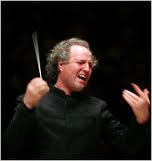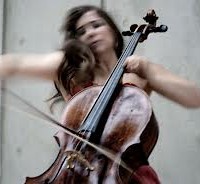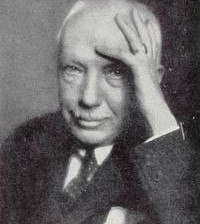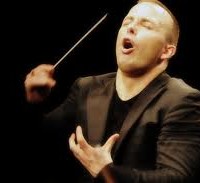- Two Thanksgiving Thoughts for the ACAPosted 10 years ago
- Shop til you Drop at the Healthcare Marketplace Part 2: Frustration!Posted 10 years ago
- An Early Casualty in the Affordable Care FightPosted 10 years ago
- Some Good News for a ChangePosted 10 years ago
A Profile in Courage at the Philharmonic by Curtis Rittenhouse

 I had the pleasure of attending the first of two concerts conducted by Kurt Masur, the Conductor Emeritus of the New York Philharmonic, in all-Brahms programming. The first program included the Double Concerto for Violin, Cello and Orchestra with the pastoral Second Symphony. Masur now 85 has been largely out of circulation since falling in France in the Spring during a concert and fracturing his right clavicle.
I had the pleasure of attending the first of two concerts conducted by Kurt Masur, the Conductor Emeritus of the New York Philharmonic, in all-Brahms programming. The first program included the Double Concerto for Violin, Cello and Orchestra with the pastoral Second Symphony. Masur now 85 has been largely out of circulation since falling in France in the Spring during a concert and fracturing his right clavicle.
His Parkinson’s Disease, quite evident when he last conducted the Shostakovich 13th Symphony at Avery Fisher Hall, is a debilitating affliction for a celebrated conductor. It affects all forms of motion, so vital to 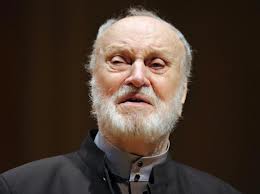 the craft. Treatment is iffy and unpredictable. There are good days and bad. Even the ability to get on and off the stage is hobbled. The ability to signal basic messages to the players is affected. There can be no greater nightmare for a conductor except Alzheimer’s or a stroke. Luckily Masur’s way with Brahms is well-practiced and well documented. He has recorded all the symphonic works and piano concertos with the Leipzig Gewandhaus during his intendancy there. He recorded the symphonies again in New York plus the German Requiem.
the craft. Treatment is iffy and unpredictable. There are good days and bad. Even the ability to get on and off the stage is hobbled. The ability to signal basic messages to the players is affected. There can be no greater nightmare for a conductor except Alzheimer’s or a stroke. Luckily Masur’s way with Brahms is well-practiced and well documented. He has recorded all the symphonic works and piano concertos with the Leipzig Gewandhaus during his intendancy there. He recorded the symphonies again in New York plus the German Requiem.
 There has never been anything slick about the Hamburg-born Brahms’s music and nothing slick about Masur’s interpretations. This is honest music making. The Double Concerto is actually the one major piece, other than the Alto Rhapsody, Masur has not recorded. Originally this was to be a showcase for the two principals of the Philharmonic, but Carter Brey’s last minute withdrawal brought an unexpected debut by the young American cellist Alisa Weilerstein. The piece is Brahms’s homage to older forms and a perfect companion to his last Fourth symphony.
There has never been anything slick about the Hamburg-born Brahms’s music and nothing slick about Masur’s interpretations. This is honest music making. The Double Concerto is actually the one major piece, other than the Alto Rhapsody, Masur has not recorded. Originally this was to be a showcase for the two principals of the Philharmonic, but Carter Brey’s last minute withdrawal brought an unexpected debut by the young American cellist Alisa Weilerstein. The piece is Brahms’s homage to older forms and a perfect companion to his last Fourth symphony.
Weilerstein has a big juicy tone with a generous emotive range. She dug into the piece fearlessly, contrasting effectively with Concertmaster Glenn Dicterow’s more polished and deferential playing. Whether from great rehearsal or knowing Masur’s wishes in advance, the Philharmonic responded knowingly to the soloists. We have 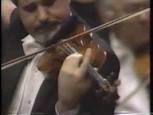 heard more emphatic, more chamber-scaled, or more virtuosic interpretations of this rarely heard piece, but it is easy to believe this was exactly what Brahms may have had in mind when he wrote it over 100 years ago.
heard more emphatic, more chamber-scaled, or more virtuosic interpretations of this rarely heard piece, but it is easy to believe this was exactly what Brahms may have had in mind when he wrote it over 100 years ago.
I was impressed with Masur’s spunk in appearing and conducting as effectively as he did with his former orchestra. You could see a brace through his top shirt which stabilized the broken shoulder. I can recall painfully watching the great German-American conductor William Steinberg (Boston, Pittsburg and Buffalo music director) struggling mightily against this same handicap late in his career and being laid low by the challenge. The pace was inert. The movement minimal, the terrible slow shuffling gait getting off and on the stage. The trouble with the disease, as many sufferers can tell you, is that the treatment can be as bad as the disease. It is not an affliction, it is a curse.
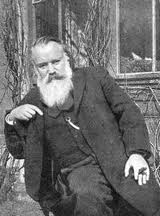 In the second half, Masur’s direction of Brahms Second, almost a signature piece for him, was warm and assured. Only in a slowish final movement did one sense any compromise to the challenges posed by this awful affliction. In his curtain calls, the erstwhile Music Director was generous with his fellow performers. His fatherly embrace of his one-time concert master was enough to bring tears to the eyes of those Philharmonic loyalists who remember what he did for the standards of this once notoriously untamable assembly. It was rewarding Brahms and a profile in courage for all in attendance. There is more to music-making than slick virtuosity and periodic flashes in the pan.
In the second half, Masur’s direction of Brahms Second, almost a signature piece for him, was warm and assured. Only in a slowish final movement did one sense any compromise to the challenges posed by this awful affliction. In his curtain calls, the erstwhile Music Director was generous with his fellow performers. His fatherly embrace of his one-time concert master was enough to bring tears to the eyes of those Philharmonic loyalists who remember what he did for the standards of this once notoriously untamable assembly. It was rewarding Brahms and a profile in courage for all in attendance. There is more to music-making than slick virtuosity and periodic flashes in the pan.
Curtis Rittenhouse

